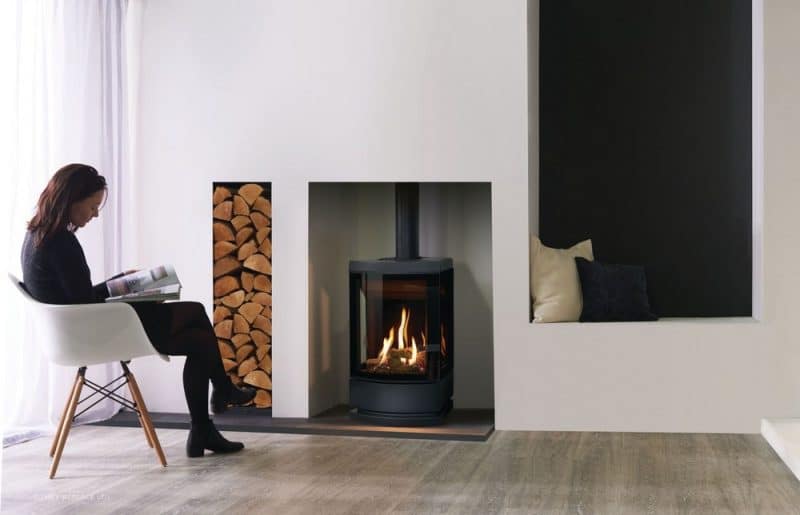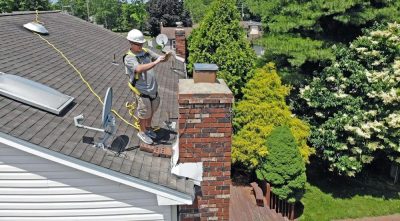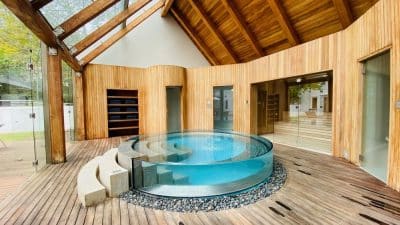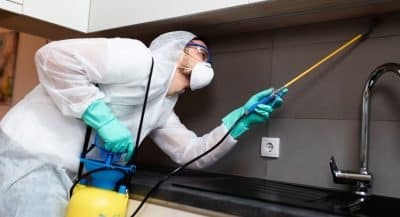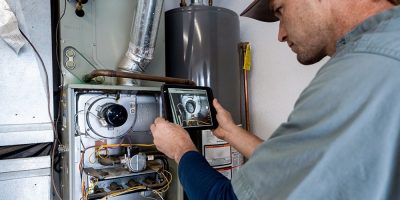
Selecting the ideal fireplace for your home goes beyond aesthetics; it’s about creating a warm, inviting atmosphere that enhances your daily life. If you’re wondering how to choose the right fireplace, this overview demystifies the options—from traditional wood-burning hearths to high-tech gas, electric, and ethanol-fueled models—so you can find a perfect match for your home and lifestyle. This guide will help you navigate the world of fireplaces, ensuring you find the right fit for both your home’s design and your comfort needs.
Understanding Different Types of Fireplaces
When it comes to fireplaces, each type offers unique advantages and appeals to different tastes and requirements. Understanding these differences is crucial in making an informed decision.
Wood-Burning Fireplaces
Wood-burning fireplaces are the epitome of traditional hearths, offering the comforting crackle of logs and the unmistakable aroma of burning wood. These fireplaces create a rustic, cozy ambiance that many homeowners love. However, they require regular maintenance, such as chimney cleaning and ash disposal, to ensure safety and efficiency. The romantic charm of a wood-burning fire is unmatched, but it comes with the responsibility of sourcing, storing, and handling firewood.
Gas Fireplaces
Gas fireplaces are a popular choice for those who value convenience and efficiency. Unlike wood-burning fireplaces, they don’t require wood and can be easily operated with a switch or remote control. Gas fireplaces provide consistent heat and are highly energy-efficient, making them an attractive option for modern homes. They do require a connection to a gas line and regular maintenance to check for leaks and ensure proper venting. Their clean-burning nature also means less pollution compared to traditional wood fireplaces.
Electric Fireplaces
Electric fireplaces are known for their ease of installation and flexibility in placement. They don’t require venting, making them an ideal choice for apartments or homes without existing chimneys. Electric fireplaces are safe, emitting no pollutants, and can be installed almost anywhere with an electrical outlet. While they may lack the sensory experience of a real fire, they offer adjustable heat settings, realistic flame effects, and the ability to heat a room efficiently without the need for fuel storage.
Ethanol Fireplaces
Ethanol fireplaces represent a modern, eco-friendly option. They burn cleanly, producing no smoke or ash, and are highly portable, allowing for versatile placement. With their sleek, minimalist design, ethanol fireplaces are perfect for contemporary spaces. However, they require regular refueling with bioethanol, and while they provide a beautiful flame, they may not generate as much heat as other types of fireplaces. They are an excellent choice for those looking to combine style with sustainability.
Assessing Your Space and Needs
Choosing the right fireplace involves more than just selecting a type; you must also consider the specifics of your space and how you plan to use the fireplace.
Size and Scale
The size of your fireplace should be proportionate to the room. A large fireplace in a small room can overwhelm the space, while a small fireplace in a large room may not provide sufficient warmth or visual impact. Measure your space carefully and consider the ceiling height, as well as the room’s overall dimensions, to ensure the fireplace enhances rather than dominates the space.
Ventilation and Safety Considerations
Different fireplaces have different ventilation requirements. Wood and gas fireplaces typically need a chimney or vent to safely expel fumes and smoke, while electric and ethanol fireplaces do not. Ensure that your chosen fireplace type can be safely installed in your home, taking into account existing ventilation systems or the need for new installations. Additionally, consider safety features such as glass doors, screens, and automatic shut-off mechanisms to protect your household.
Design and Aesthetics
The design of the fireplace should complement your home’s existing décor. Whether you prefer a traditional, ornate mantle or a sleek, modern frame, the fireplace should be a focal point that enhances the room’s overall aesthetic. Consider the materials, finishes, and color scheme that will best integrate with your interior design.
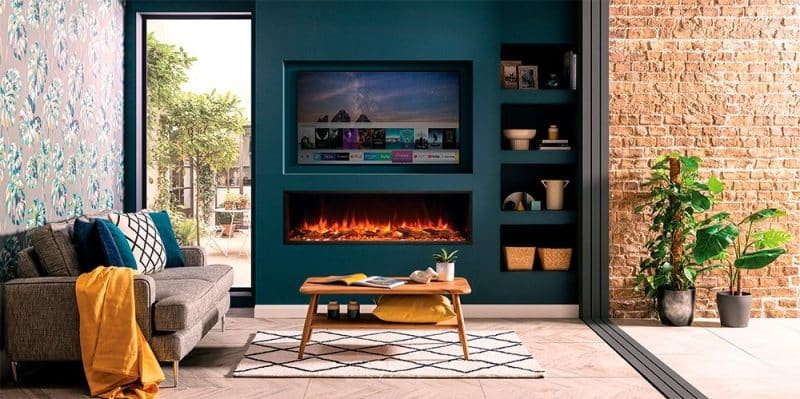
Energy Efficiency and Environmental Considerations
In today’s environmentally conscious world, energy efficiency and the environmental impact of your fireplace choice are important factors to consider.
Energy Efficiency
Electric fireplaces are among the most energy-efficient options, converting nearly 100% of the electricity they consume into heat. Gas fireplaces, while slightly less efficient than electric ones, still offer substantial energy savings over wood-burning models. Wood-burning fireplaces, although aesthetically pleasing, are the least efficient and contribute the most to energy waste due to heat loss through the chimney.
Environmental Impact
The environmental impact of your fireplace also depends on the fuel it uses. Wood-burning fireplaces produce smoke and particulate matter, which can contribute to air pollution. Gas fireplaces burn cleaner, emitting fewer pollutants. Ethanol fireplaces burn cleanly with no smoke or soot, making them a greener alternative. Electric fireplaces, though efficient, rely on the energy grid, which may or may not be sourced from renewable energy. When possible, opt for sustainable fuel options and regularly maintain your fireplace to minimize its environmental footprint.
Installation and Maintenance Requirements
The installation and maintenance of a fireplace vary greatly depending on the type, and these factors should be carefully considered before making your purchase.
Wood-Burning Fireplaces
Wood-burning fireplaces require a chimney and flue, both of which must be installed by professionals to ensure safety and compliance with building codes. Regular maintenance includes chimney cleaning to prevent soot and creosote buildup, which can lead to dangerous chimney fires.
Gas Fireplaces
Gas fireplaces require a gas line and proper venting, both of which should be installed by a certified technician. Maintenance involves regular checks for gas leaks and ensuring that the venting system is clear and functioning correctly.
Electric Fireplaces
Electric fireplaces are the easiest to install, often requiring no more than a nearby electrical outlet. Maintenance is minimal, typically involving occasional cleaning and inspection of the electrical components.
Ethanol Fireplaces
Ethanol fireplaces are relatively easy to install, often requiring no more than placement and occasional refueling. However, because they are ventless, it’s important to use them in well-ventilated spaces and follow manufacturer guidelines for refueling to avoid accidents.
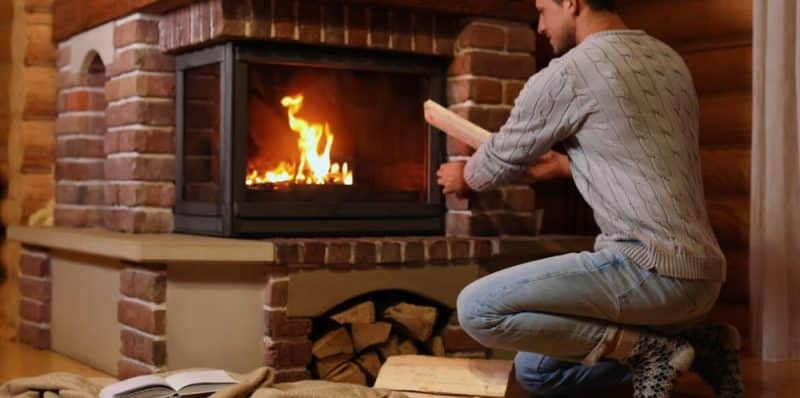
Budget and Cost Implications
When budgeting for a fireplace, it’s important to consider both the initial installation costs and ongoing expenses.
Installation Costs
Wood-burning fireplaces generally have the highest installation costs due to the need for a chimney and structural modifications. Gas fireplaces are less expensive to install but require a gas line connection. Electric fireplaces offer the lowest installation costs, as they typically only require an electrical outlet. Ethanol fireplaces fall in the mid-range, with moderate installation costs and the need for regular fuel purchases.
Operating Costs
Operating costs vary by fuel type. Electric fireplaces are generally the most cost-effective to run, while gas fireplaces incur ongoing costs for natural gas. Wood fireplaces, while the most traditional, can be costly due to the price of firewood and the need for regular maintenance. Ethanol fireplaces require the purchase of bioethanol fuel, which can be more expensive than other options, but they are generally low-maintenance.
Additional Features and Technologies
Modern fireplaces come equipped with a range of features that enhance convenience, safety, and overall user experience.
Advanced Control Systems
Many contemporary fireplaces offer remote control options, allowing you to adjust heat levels and flame intensity from the comfort of your couch. Some models even integrate with smart home systems, enabling control via smartphone apps or voice commands. These features make it easier to manage your fireplace and create a customized ambiance at any time.
Energy Efficiency Enhancements
Advancements in technology have led to improved energy efficiency in fireplaces, particularly in gas and electric models. Features such as programmable thermostats, timers, and automatic shut-off functions help conserve energy and reduce costs, all while maintaining a comfortable temperature in your home.
Eco-Friendly Innovations
For environmentally conscious consumers, new fireplace models incorporate eco-friendly designs and materials. Ethanol fireplaces, for instance, use biodegradable fuel, while some electric fireplaces are designed to be highly energy-efficient, reducing their overall carbon footprint.
Making the Final Decision
Choosing the right fireplace is a balance between practical needs and personal preferences. Consider your space, desired fuel type, energy efficiency, environmental impact, and budget. It’s also important to think about how the fireplace will fit into your lifestyle and the overall design of your home. Whether you prioritize the timeless charm of a wood-burning fire or the modern convenience of a gas or electric model, your fireplace should enhance both the warmth and ambiance of your living space.
Conclusion
Selecting the perfect fireplace for your home is about finding the right balance between features, efficiency, and personal taste. With so many options available, from traditional wood-burning to state-of-the-art electric and ethanol models, there’s a fireplace that will suit every style and need. Remember, a fireplace not only warms your home but also adds character and charm, creating a welcoming atmosphere that can be enjoyed for years to come.
